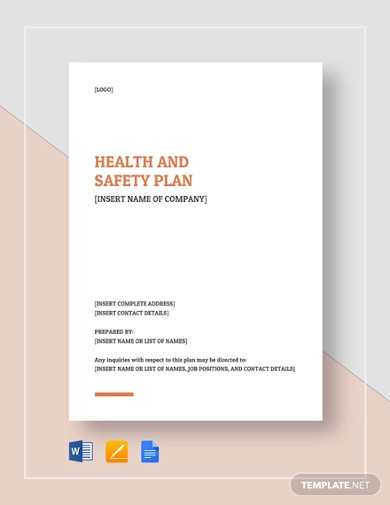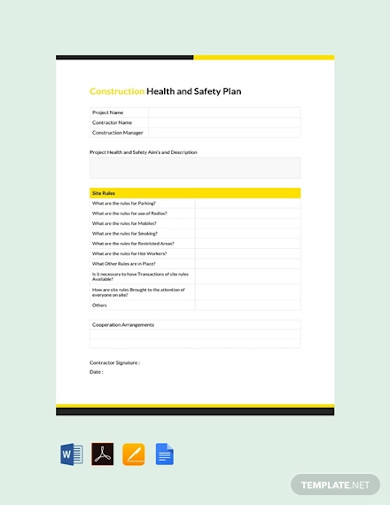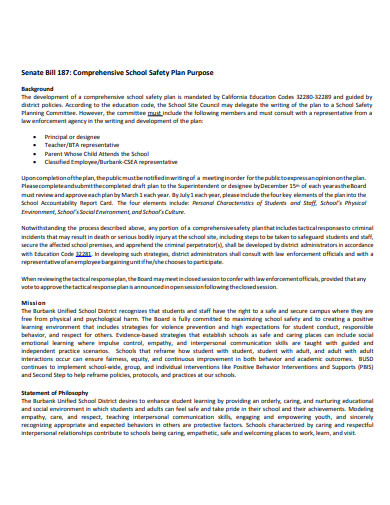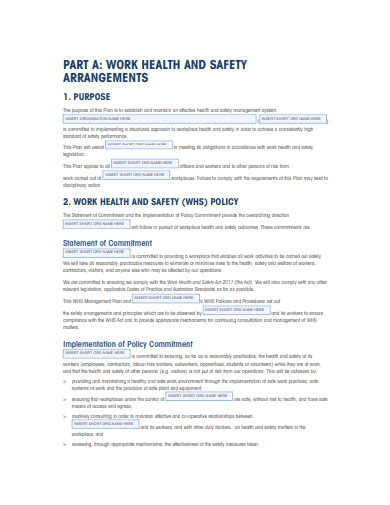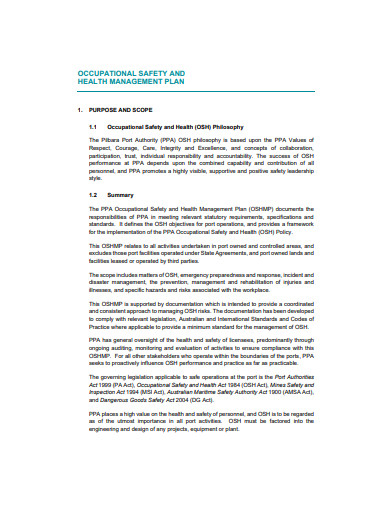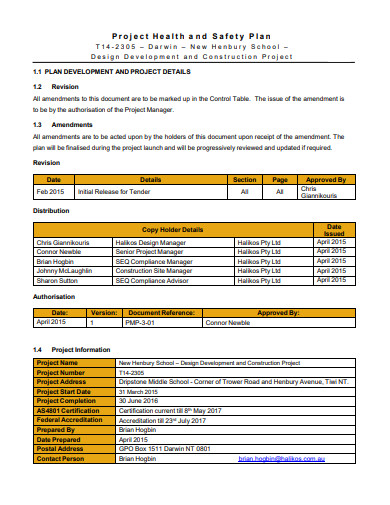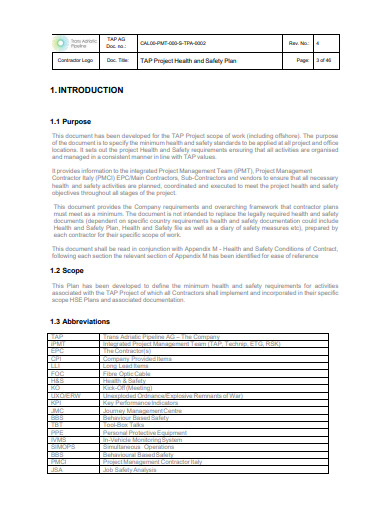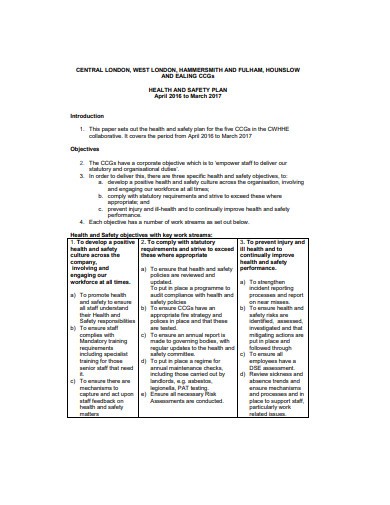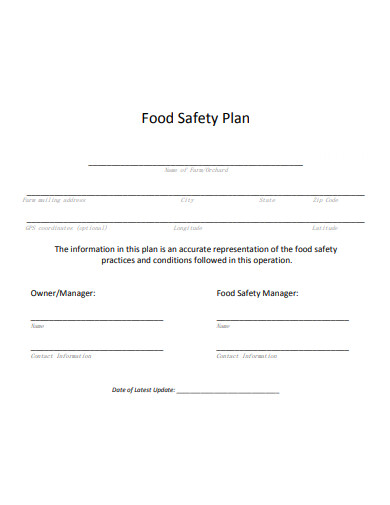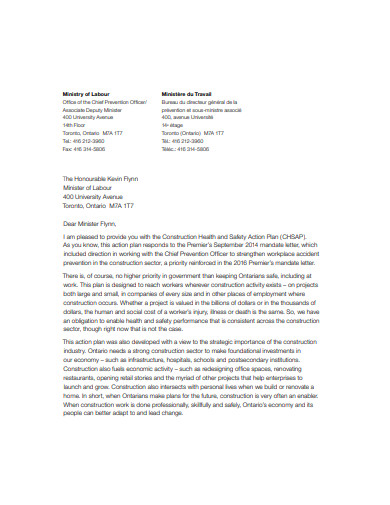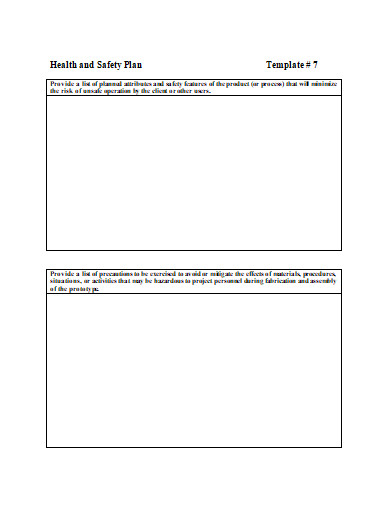12+ Safety Plan Examples to Download
One should always be prepared for the unexpected. It’s not only something that happens to kids at school or at the office. Similarities exist amongst institutions with very different functions, such as schools, commercial buildings, restaurants, and hospitals, all of which have several safety plans available. Now is the perfect moment to build one for your company if you haven’t already.
12+ Safety Plan Examples
1. Health and Safety Plan Template
2. Free Construction Health and Safety Plan Template
3. Comprehensive School Safety Plan
4. Work Health and Safety Management Plan
5. Safety and Health Management Plan
6. Project Health and Safety Plan
7. Sample Project Health and Safety Plan
8. Food Safety Plan
9. Health and Safety Plan Format
10. Basic Health and Safety Plan
11. Food Safety Plan Example
12. Construction Health and Safety Action Plan
13. Health and Safety Plan in DOC
What Is a Safety Plan?
In the event of an emergency or disaster, it is important to have in place a safety plan that lays out the steps to take. Events of fire, earthquake, tornado, flood, and biological attacks are examples of circumstances that need safety strategic plans. This method does more than just ensure everyone’s safety; it also helps cut down on potential legal problems.
How to Devise a Reliable Safety Plan
Plans for safety must be error-proof. One mistake in your emergency plan might mean losing your life. To prevent that, make sure that every component and element of your strategy is clear and concise. It is important to take the necessary precautions to ensure that the worst-case scenario does not occur.
1. Conduct Risk Assessment
Students at school, construction workers, and employees sitting in their offices are exposed to different levels of hazards and risks. Conducting a safety risk assessment to identify possible risks in a specific location will serve as a guide for the organization to create an emergency action plan that provides a solution to all the problems in the area.
2. Put Together a Situation-Specific Framework
Conduct careful research on the appropriate responses to each situation that may occur inside the facility. Create a safety checklist of all the things you should include and make sure to go through each item. The things you should add to your checklist include routes for evacuation, types of equipment to use, emergency numbers, immediate action plan, communication methods, actions in securing the area, and waste disposal procedures. To ensure its credibility, it is necessary to let the experts examine and proofread your plan. Also, remember to make your framework comprehensible to the general public.
3. Disseminate the Information
The most important part of this plan-making process is to think of the best way to inform the people regarding the plan. You can consider handing out individual copies of a written safety plan, as well as posting a safety flyer in places where everyone can see it. Besides, it is also advisable for institutions to conduct seminars to constantly refresh the memories of the members.
4. Consider Doing Drills
There is a big difference between “drilling” the strategy into people’s brains and really letting them practice it. Some individuals may learn more effectively by putting the strategy into reality since everyone learns differently. This may be becoming an inconvenience to you, but it is essential to maintaining a safe learning and working environment.
FAQs
Who needs a safety plan?
Safety plans are commonly used in situations where individuals or groups are at risk of harm, such as domestic violence situations, mental health crises, or workplace safety concerns. They can also be useful for businesses, schools, or other organizations that want to ensure the safety of their employees or constituents.
What are the basic rules for safety?
The most basic safety rules are dressing appropriately, reporting accidents, conducting regular job safety analysis, following procedures, and being neat. It also includes avoiding using machinery you are not familiar with. Establishments should strictly implement these rules as early as now to reduce accidents in the future. Everyone should take part in keeping the workplace safe.
How should you ensure safety in your workplace?
Training your employees well is a vital part of ensuring safety in your office. Rewarding behaviors that contribute to safety is a vital part of this safety training plan. Other methods of keeping your workplace secure are implementing a safety policy and giving proper gear to employees. Ergonomic hazards also exist in workstations, as a solution for this, you should encourage your employees to take breaks for stretching.
You can’t predict when calamities and emergencies would happen. Preparing for them in advance by creating a health and safety strategic plan would reduce the possible casualties. No matter what organization you belong to, safety should always be the number one priority. When people need to worry less about their safety they have more time to be productive and perform well on their tasks.



